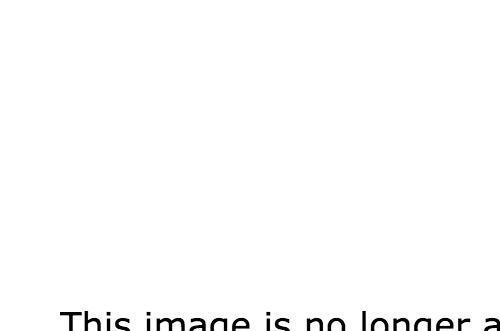
The Citizen Kane of stick figure art is a 62-minute movie called It’s Such a Beautiful Day, which screened in scattered theaters nationwide in 2012. It is, forewarning, a real heartrender, about a character named Bill who suffers from a terminal illness that’s never identified, but that seems to be both genetic and brain-related. A soaring classical score and dispassionate voice-over provide the inroads to his sometimes tragic, sometimes dryly funny inner life.
As Bill grapples with his impending mortality, his memories and experiences occasionally get warped by his condition, his mind and body no longer reliable (“The guy next to him at the bus stop had the head of a cow, but Bill pretended not to notice,” the narrator notes). And while he is confronted with some of the major questions of existence, the mundane details of everyday life are there as well, suddenly looming large — the awkward encounter on the street with someone he isn’t sure if he knows, the play of dust in a sunbeam, the kid in the park trying to sell magazine subscriptions.
The result is as transcendent and moving as it is absurd and intimate, and all of it’s centered on a character whose devastating humanity contrasts the fact that he’s rendered with just a few simple lines — dots for eyes, a slash for a mouth, an ovaloid body, and a rectangular hat. Bill’s stick figureness isn’t a novelty or an extended joke; it is, in the most unexpected way, profound.


The filmmaker behind Bill is Don Hertzfeldt, who wrote and directed It’s Such a Beautiful Day (which is now available to stream on Netflix), and also produced, narrated, and animated it. His unique career has been continuing proof of all the artistic compromises you don’t have to make in order to create groundbreaking movies, at least not when you’re brilliant, compulsively hardworking, and have come up with a way to make a living off something seemingly unsustainable.
Hertzfeldt’s 38, and for 20 years now has been making sui generis animated shorts by hand by himself, painstakingly drawing on paper and photographing his work on 16mm or 35mm film cameras. The homegrown quality extends to his visual style, which, even as it’s gotten radically more sophisticated, is still filled with remarkably eloquent stick figures.

For most filmmakers, shorts are a means to an end, a calling card or audition tape for something bigger and more profitable. But for Hertzfeldt, they’ve been a career unto themselves — even It’s Such a Beautiful Day was first released over the course of five years as a trilogy of shorts, and only later cut together into a feature. He supported himself through DVD and digital sales and an indie band-style approach to touring with his work, traveling around with his most recent film and a collection of past ones, drawing on a devoted fanbase.
But those fans aren’t the only ones who’ve been paying attention to Hertzfeldt’s work. Back in 2000, his self-referential cult favorite Rejected earned him one of the most delightfully surprising Oscar nominations in Academy Award history, and his most recent effort, World of Tomorrow, just snagged him the shorts Grand Jury Prize at the Sundance Film Festival, making him the only director to win the award twice (the other was for Everything Will Be OK in 2007).
Not that that fact is going to his head. “In a way, I've had seven films here, so you could also say I'm the all-time losingest,” Hertzfeldt joked when he sat down with BuzzFeed News in Park City in January. Thoughtful and relentlessly self-deprecating in person, Hertzfeldt is poised, despite himself, to do some major leveling up in the next few years. The win for World of Tomorrow, which qualifies the 17-minute film for next year’s Oscars, came only a few months after Hertzfeldt created a custom couch gag for the season premiere of The Simpsons. It’s an opportunity he described as “my dream from when I was 12 years old,” putting his work in front of his broadest audience to date, and creating the darkest, weirdest moment the show’s ever managed in its 26 years on air.

Both projects represent a seismic behind-the-scenes shift in Hertzfeldt’s career: After years of defiantly old school analog animating, he finally made the move to digital for World of Tomorrow and the Simpsons opener, swapping pen and paper for a Cintiq tablet that’s allowed him to work much faster and fall back in love with the process. “After It's Such A Beautiful Day, I didn't want to draw anything,” Hertzfeldt admitted. “I was pretty tired, and I wasn't really sure what more I could offer in the shorts format.” Doodling on a iPad using an animation app created by the National Film Board of Canada has provided Hertzfeldt a way back “into relaxing and having fun with being a little kid again and drawing.”
World of Tomorrow began as a “learning thing,” a way to explore the ins and outs of digital animation, then “the writing just grew and grew.” “I was expecting the visuals to be cheesier. It’s very flat and very colorful — I wanted it to look like a children's book — but as I learned more I was like, I can actually do this,” Hertzfeldt said. “It was so refreshing to go super fast. Just build everything and have a shot done every day.”
“I liked the idea of your older self speaking to your younger self. Because you'd have so much advice, but there's no way your younger self is going to listen.”
The result feels reassuringly like, well, a Don Hertzfeldt movie: hilarious, melancholy, and immensely rewatchable. It’s set in a dystopian era in which a (stick figure, natch) woman named Emily (voiced by fellow animator Julia Pott) reaches across time to speak with the little girl from whom she’ll eventually be cloned. Hertzfeldt built the short around recordings of his 4-year-old niece Winona Mae, whose adorable, uncoached observations form half of a conversation that’s otherwise about the inventively terrible state of the future.
“I liked the idea of your older self speaking to your younger self,” Hertzfeldt said. “Because you'd have so much advice, but there's no way your younger self is going to listen. The world-weariness of the older self — we're all doomed, darkness, all these terrible pitfalls in your life — it's just such a fun contrast.” World of Tomorrow has more festival screenings in its future, but Hertzfeldt is also eager to make it available on video on demand soon. “I just want people to see it,” he said.
But Hertzfeldt’s brain doesn’t rest: He’s now turning his attention toward what will be his first (intentional) full-length feature, Antarctica. “Going directly from one project to the other and sharing time with them all, the engine in your brain doesn't quit. When that's constantly firing, everything gets better for me,” Hertzfeldt said. “I have a feeling I'm going to need something at home. Otherwise, I'm going to rake leaves and stare at the cat and the engine is going to slow down and I'm going to get kind of weird.”

The screenplay for Antarctica — which is set to be produced by Snoot Entertainment, the company behind The Guest and Charlie Kaufman’s upcoming stop motion film Anomalisa — is something Hertzfeldt has been working on for years. While he’s tight-lipped about the details, there’s one aspect of Antarctica he’s happy to talk about: The fact that, for the first time in his two-decade career, he’ll be working with other animators.
“I'm coming from a world where I'm doing literally everything by myself, and to be able to collaborate and to be able to not grind it out every single day, one frame at a time, I almost feel it's going to be a bit like a vacation for me,” Hertzfeldt said. “Suddenly, I have a workshop full of elves making the shoes.”
It’s a quiet but substantial change for a filmmaker who’s been as close to a solo artist as the medium allows, toiling in the dark for months and sometimes years at a time on each new short and emerging, blinking, to present it to audiences. (Animators, in his words, tend to be “pale little worms in our caves.”)
Though Antarctica is still in its paperwork and preproduction stage, Hertzfeldt will soon have to find a team of animators who can channel his particular and wonderfully peculiar sensibility. “I've been doing a very specific style for a very long time,” he said. “Making sure that translates is probably going to be the biggest hurdle for the artists. Because there is a very specific anatomy to a stick figure.”
Even working on grander scale, those stick figures will never go away. “It’s hard for me to write without that in mind now,” he confessed. “It's how I visualize things now.”

